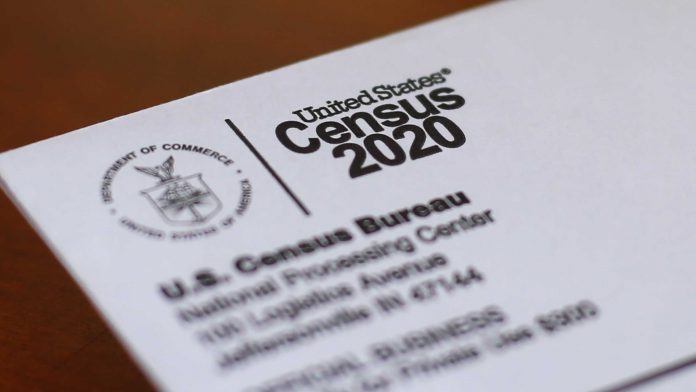
Facing unprecedented challenges from a pandemic, the U.S. Census Bureau on Monday reported reaching its predicted goal for people answering the 2020 census questionnaire on their own — 60.5%.
The self-response rate will likely grow higher in the next two months before the next phase of the 2020 head count begins in August. That’s when hundreds of thousands of census-takers start knocking on the doors of homes whose residents haven’t yet answered the census questions. The higher the self-response rate, the fewer door-knockers are needed and that saves the Census Bureau money.
The door-knocking phase originally was supposed to start last month, but it was delayed until August because of the spread of the new coronavirus. The pandemic also forced the Census Bureau to suspend field operations for a month and a half, pushed back the deadline for ending the count from the end of July to the end of October and led the agency to ask Congress for delays in turning over reapportionment and redistricting data.
“Now we’re in uncharted territory, with a dramatically extended time-frame for self-response and door-knocking not scheduled to start for another two months,” said Steven Romalewski, director of CUNY Mapping Service at the Center for Urban Research. “The new time-frame provides an unprecedented opportunity to boost self-response rates and therefore reduce the universe of households that will need to be counted in-person — perhaps substantially.”
The final self-response rate was 66.5% during the 2010 census when most respondents mailed back answered paper questionnaires.
This was the first once-a-decade census in which most respondents were encouraged to fill out their forms online, and the overwhelming majority of respondents have answered via the Internet. People can also respond by telephone or by mailing back their questionnaires.
The 2020 census will determine how many congressional seats each state gets and the distribution of $1.5 trillion in federal funding.
The bureau is asking Congress for a delay in the deadline for delivering state counts for apportionment from the end of December to the end of April, and to postpone the timetable for turning over redistricting data to the states from the end of March to end of July. That has several state officials worried that they won’t be able to meet redistricting deadlines, and two states, Virginia and New Jersey, have statewide elections next year.
On Monday, some members of Virginia’s congressional delegation said in a letter they worried that the delays would prevent the state from drawing new districts before the 2021 election. The lawmakers asked U.S. Commerce Secretary Wilbur Ross, whose department oversees the Census Bureau, to prioritize the release of the redistricting data to Virginia since it has a primary election in June.



















